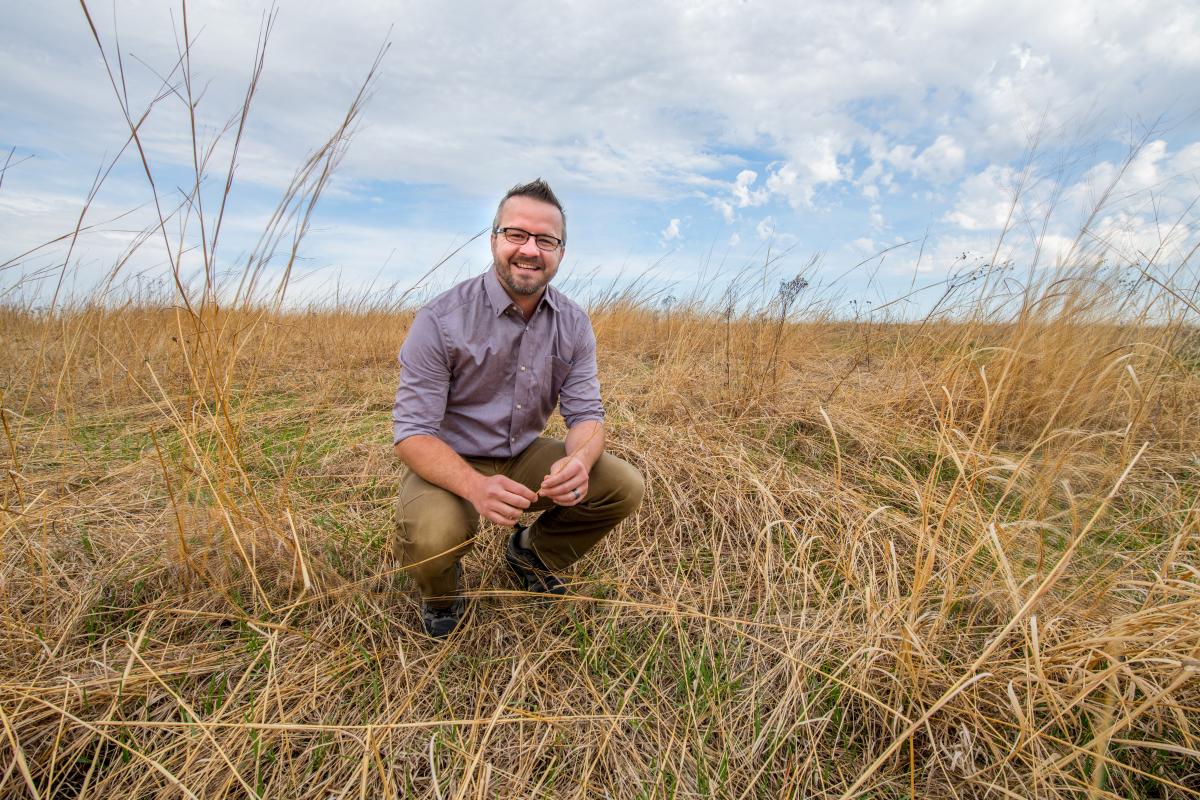
The Eastern redcedar can be seen everywhere across Nebraska, especially in the Nebraska Sandhills. Many travelers drive past without knowing that this species of tree poses one of the biggest threats to the Nebraska Sandhills.
According to Dirac Twidwell, assistant professor of rangeland ecology and co-principal investigator of the National Research Traineeship program at the University of Nebraska–Lincoln, the Eastern redcedar is causing a broad-scale loss of grasslands in Nebraska. The Eastern redcedar has destroyed grasslands in some southern states, and it’s happening currently in Nebraska.
“Nebraska now represents the current battlefield for Eastern redcedar,” Twidwell said.
HISTORY
The invasive Eastern redcedar is a native tree in Nebraska. It’s a historically rare species in the state, but after vigorous planting of the tree for the past century, it has become widely invasive. For the last 90 years, Nebraskans have planted hundreds of thousands of Eastern redcedar trees each year.
Scientists have been studying the consequences of Eastern redcedar invasion and its social and ecological impacts since the 1940s, Twidwell said. Studies started with impacts on soil and nutrient cycling and have slowly shifted to impacts on wildlife and livestock production. Scientists discovered that the Eastern redcedar poses one of the greatest risks to the sustainability of grasslands.
Most of the Nebraska Sandhills is productive grazing land for the millions of cattle Nebraska raises each year. The further invasion of Easter redcedar would cause a critical decrease in available grazing land for those cattle. According to Twidwell, there is a 75 percent loss in livestock profitability when grasslands are converted into cedar woodlands.
“I can’t identify another invasive species that comes into grasslands that has this big of an impact, yet we still widely distribute new seed sources into environments where cedar is rare. We do not follow this logic for other invasive species,” Twidwell said.
That culture of tree planting in Nebraska worked when the state was being established, but this particular tree spreads from tree plantings. “People didn’t expect them to spread and invade because they were so difficult to get established initially,” he said.
Globally, grasslands are the least protected of the seven main ecological areas on Earth, called biomes, according to Twidwell. Grasslands have lost the greatest proportion of land compared with other biomes. The Nebraska Sandhills is one of the largest remaining grasslands in North America. That may soon change with the Eastern redcedar taking over.
“If we want to conserve the Sandhills, we know we have to change,” Twidwell said. “It is very difficult to find expansive grasslands anymore. The uniqueness of the Sandhills is so valuable, and we want to be sure Nebraskans are aware of the key risks posed by Eastern redcedar,” he added.
SCHOOL TRUST LANDS
Starting in 1803, funding for public education in the United States was established through land grants from the U.S. Congress, under the leadership of President Thomas Jefferson. Each state received this land grant upon its entry into statehood. Upon its entry into statehood in 1867, Nebraska received nearly 3 million acres of land through the Enabling Act, signed in 1867 by President Abraham Lincoln. The land could be sold or leased to provide revenue for the public schools. The Nebraska Board of Educational Lands and Funds oversees the School Trust Lands and is Nebraska’s largest private landowner. The School Trust Lands are located throughout Nebraska; much of the land is rangeland used for cattle production. The revenue generated from these properties goes to public schools across the state.
However, the rangeland now is affected by the invasive Eastern redcedar. Since 2010, the Nebraska Board of Educational Lands and Funds has had to spend an additional $250,000 per year to control the invasion of the trees, Twidwell said. The increase of control costs takes away money from all of the public schools in the state, not just in the Nebraska Sandhills.
“No one would expect a tree that invades to affect public education,” Twidwell said, but because of the Eastern redcedar, and the 75 percent loss of grazing revenue following conversion of grasslands to cedar woodlands, land meant to produce support dollars for public schools is at risk. Since 2000, Nebraska’s School Trust Lands generated nearly $600 million. “Take 75 percent off of that, and that’s your total potential risk,” Twidwell said.
CREATING CONVERSATIONS
Twidwell and his team at the university have been working with multiple groups across the state to get the word out about the Eastern redcedar. They received a five-year, $3 million National Science Foundation grant to continue their research, more than a million dollars from Nebraska Game and Parks Commission, as well as funding from USDA National Working Lands for Wildlife program. According to Twidwell, there are multiple partnerships between landowners and agencies across Nebraska, including the Nebraska Environmental Trust, Nebraska Game and Parks and the Sandhills Task Force.
“I can’t think of a public state agency that does not have this on their radar right now,” Twidwell said.
From these partnerships, the Eastern Redcedar Science Literacy Project was developed as an Extension resource. It’s an online, comprehensive resource that details all of the research on the Eastern redcedar: https://agronomy.unl.edu/eastern-redcedar-science-literacy-project.
CHANGING CULTURE
Through his research, Twidwell discovered that one issue surrounding the Eastern redcedar invasion is the lack of prevention efforts and how this is tied to Nebraska’s culture of tree planting. Since the Great Plains was settled, the planting of trees in grasslands has been a common and well-accepted practice. This is an example of a social-ecological trap, according to Twidwell. Nebraskans are caught in a trap in which tree planting is a generational and cultural identity, but without recognition that the planting of certain species in certain locations is contributing to the loss or resilience of key natural resources in the state.
-- Riley Nichols, Agribusiness Student (article reprinted from IANR's 2018 issue of Strategic Discussions for Nebraska, the "Science Literacy" issue, at sdn.unl.edu)


